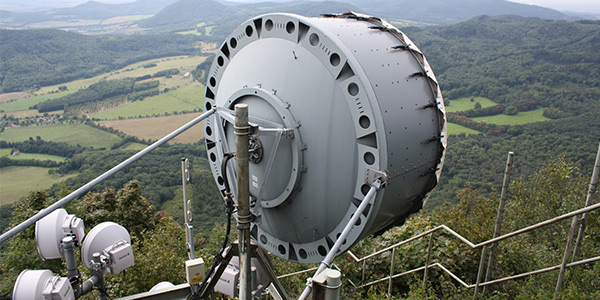By Holden Mann
The Federal Communications Commission has scheduled a vote for its April 23 open meeting on draft rules that would open the 6-GHz wireless spectrum — currently available only to licensed operators — to unlicensed users. However, utilities remain concerned about the potential for disrupted operations.
The commission began considering opening the 6-GHz spectrum in 2017 and issued a Notice of Proposed Rulemaking in 2018 in response to growing demand for wireless broadband access by consumer devices and a congressional directive to identify additional spectra (18-295, 17-183). By some estimates, North American mobile traffic, including unlicensed Wi-Fi devices, is projected to grow nearly 35% annually through 2021.
Advocates of opening up the 6-GHz spectrum include FCC Chairman Ajit Pai, who said in a press release Wednesday that making the spectrum (5,925 to 7,125 MHz) available to consumer devices would “effectively increase the amount of spectrum available for Wi-Fi almost by a factor of five.” Electronic device makers such as Apple, Cisco Systems, Google and Qualcomm — along with wireless companies — have been vocal in their support for allowing unlicensed use of the spectrum in the hopes of easing congestion on existing frequencies, particularly from Internet of things (IoT) devices.
Measures to Prevent Interference
But electric utilities currently use the spectrum for point-to-point microwave links providing communications with substations, fault sensors, two-way meters and service crews. It is also used to provide situational awareness in rural areas where wired networks are not available. Other critical infrastructure such as police and fire dispatch, railroads, and natural gas and oil pipelines also use the spectrum. These users have expressed concern on numerous occasions about the danger of interference with their communications from consumer equipment. (See Utilities Warn of Encroachment on Communications Band.)
The proposed rule change, which Pai called the commission’s “boldest initiative yet” and a “huge benefit to consumers and innovators across the nation,” represents a partial concession to these fears. It would authorize two types of unlicensed operation in the band: a standard-power mode covering 850 MHz of the available range and indoor low-power operations across the full 1,200-MHz spectrum.
The plan would require that standard-power mode use automated frequency coordination (AFC) to avoid interfering with existing services. Utility representatives described the measure as a good start that needs expansion.
“While we appreciate the FCC proposing to require AFC for the standard-power access points, these measures must also be applied to all unlicensed devices in the band to prevent interference to mission-critical utility communications systems,” Sharla Artz, senior vice president of government and external affairs for the Utilities Technology Council (UTC), said in a statement. “We have and will continue to engage with the FCC and interested stakeholders to develop technical requirements that adequately protect critical infrastructure incumbents and allow unlicensed operations to use in the band.”
UTC’s recommendation was echoed in a filing by the National Public Safety Telecommunications Council (NPSTC), citing numerous cases in which unlicensed equipment operating at 5 GHz have interfered with higher-priority authorized services. NPSTC observed that similar situations could easily occur if consumer use of the 6-GHz band becomes more widespread without universal application of AFC, even to low-power devices.
A separate planned NOPR would allow very low-power hardware to operate across the 6-GHz spectrum as well and is intended to facilitate performance by high-bandwidth applications such as wearable technology, virtual reality and augmented reality. The FCC plans to request comment from industry on technical aspects of the proposal, including power levels and operational measures to prevent interference with existing services.




